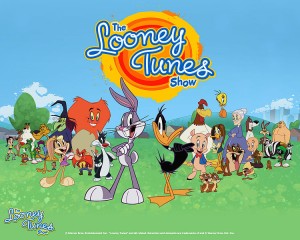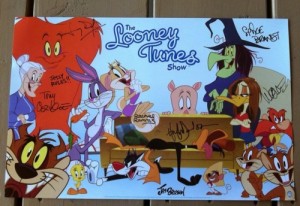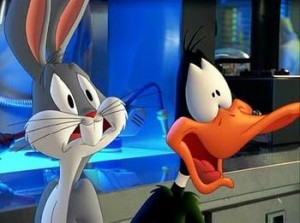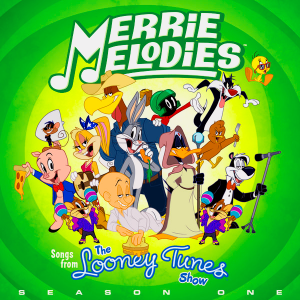
It is almost always a risky proposition dragging out a show from the pop culture vaults and trying to translate it into a concept that will work for modern audiences.
For a start, while the show may live on in syndication on say Nick at Nite (ALF, Mork and Mindy, Get Smart), or on any of the sundry extra digital channels that Australia’s commercial TV stations have conjured into being on spare slivers of bandwidth (think GEM, Eleven), it exists in a cocoon of nostalgia and people don’t want it updated.
There is a certain comfort people gain from watching these shows, whether it’s reliving childhood memories, or simply let the rose-tinted glow of the past wash over them in comforting, womb-like waves, and the idea that it could leap, unbidden into the harsh reality of now meets with understandable resistance.
Many shows too are a product of their times and simply wouldn’t translate well to a present context.
While they may have been groundbreaking at the time, they would look unbearably quaint now even with all the modern bells and whistles that modern production could bestow on them.
That is not to say that updates shouldn’t be attempted – the re-imagining of Battlestar Galactica was a triumph earning critical and commercial success for the producers who dared to give a shiny up-to-date sheen – but you need to think long and hard about why you’re re-doing it, whether the show has anything worthwhile to say in an entirely new context, and if the format even allows it to be tweaked, prodded and coaxed into a fresh incarnation.

Now I am not entirely certain how much thought went into this particular re-invention but the new Looney Tunes Show, which kicked off on May 3, 2011 on The Cartoon Network, is a clever update on the old Warner Bros.’s Looney Tunes and Merrie Melodies cartoons, that makes great use of characters that by any measure have stood the test of time.
Each character, from Bugs Bunny to Daffy Duck, from Sylvester and Tweety to the Roadrunner and Wiley E Coyote were fully-fleshed creations even in their heyday, meaning that any modern re-imagining of these creations has a solid start on which to build.
Additionally, because each of these memorable characters was thrust into a new adventure each and every cartoon, admittedly with some of the verbal and physical characteristics coming along for the ride each time, it mean that they slot in easily into almost any new situation you want to place them in.
Which is why they work so well in their new iteration.
Warner Bros Animation, with a careful eye on the modern predilection for buddy comedies and domestic ensembles (think Friends, Happy Endings) have installed the oddest of odd couples and original “frenemies” Bugs Bunny and Daffy as roommates in a funky neighbourhood in Los Angeles.

As if the sparks flying from that comedic tinderbox pairing isn’t enough, they have added as their neighbours all your favourites – Porky Pig, Foghorn Leghorn, Elmer Fudd, Tweety and Sylvester, Speedy Gonzales, Yosemite Sam, Roadrunner and Wiley E. Coyote – and yes even some of the lesser known characters like Gossamer and Pete Puma.
And while the show runs to a reasonably traditional cartoon show format, with the main section wrapped around two recurring segments – Merrie Melodies where well loved characters sing all new tunes, and the eternal chase between Wile E Coyote and Roadrunner – the themes of the show have more in common with an adult sitcom.
Episodes have addressed the perils of dating, love triangles, and the politics of rooming with someone with whom you may not have a whole lot in common, or in the case of our duel protagonists Bugs and Daffy, anything at all.
Reactions to the show have, of course, been mixed.
While there has been near universal praise for the quality of the way the characters look and sound (after all you have to get that right or people will switch before you have dazzled with much of your new show), many people have felt the show has lost the original slapstick, almost chaotic feel of the original cartoons.
To quote one critic, Ian Lueck, writing on Toonzone:
“The main problem with The Looney Tunes Show is that it’s just boring. For a theatrical series which was rarely boring, this is a cardinal sin. It’s a dialog-centric show with none of the well-executed physical humor, fast pace, or anarchic tone that made Looney Tunes such fun. It all feels very subdued, like its makers were worried about offending anyone and so played everything safe.”
And another, Maxie Zeus quoted on the same site:
“Let’s look on the bright side. If Loonatics Unleashed, Warner Bros.’ previous attempt to revive its classic Looney Tunes characters, was appalling, at least we can say that The Looney Tunes Show, its latest attempt, is no worse than dull.”

While some of their points are quite valid – the new version of Looney Tunes does not have the anarchic madness of old, and there is perhaps a tad too much political correctness strewn around for unsuspecting viewers to step in – the reason it works for me is that (a) I never expected it to be the old Looney Tunes, though I love and adore it, and (b) the characters ring true and that for me at least, is the most critical part of any show, especially a re-imagined take on a classic.
It isn’t perfect no, but it comes a lot closer than Warner Bros last attempt at bringing their evergreen characters into the modern age, Loonatics Unleashed, and while it may be exactly the same as the Looney Tunes of old, should it be?
Of course not. That would be an even greater travesty since you would be simply be mimicking the cartoons of old, an act that would not just be creatively barren, but pointless in the extreme.
No, what Warner Bros Animation has attempted, and largely succeeded in doing is retaining the attributes that made the characters as loved down the decades as they have been, and translated that to a new and different modern landscape which keeps the characters relevant and front and centre in the minds of a fickle pop culture-indulging public.
And viewers are lapping it up with average eyeballs-per-episode sitting on two million and a second series debuting just a week ago.
Yes kids it may not be your grandma’s Looney Tunes, but then it shouldn’t be if Bugs, Daffy and the gang are going to stay relevant and delight us with their offbeat perspectives on life for many years to come.
The Looney Tunes Show gives them that chance.